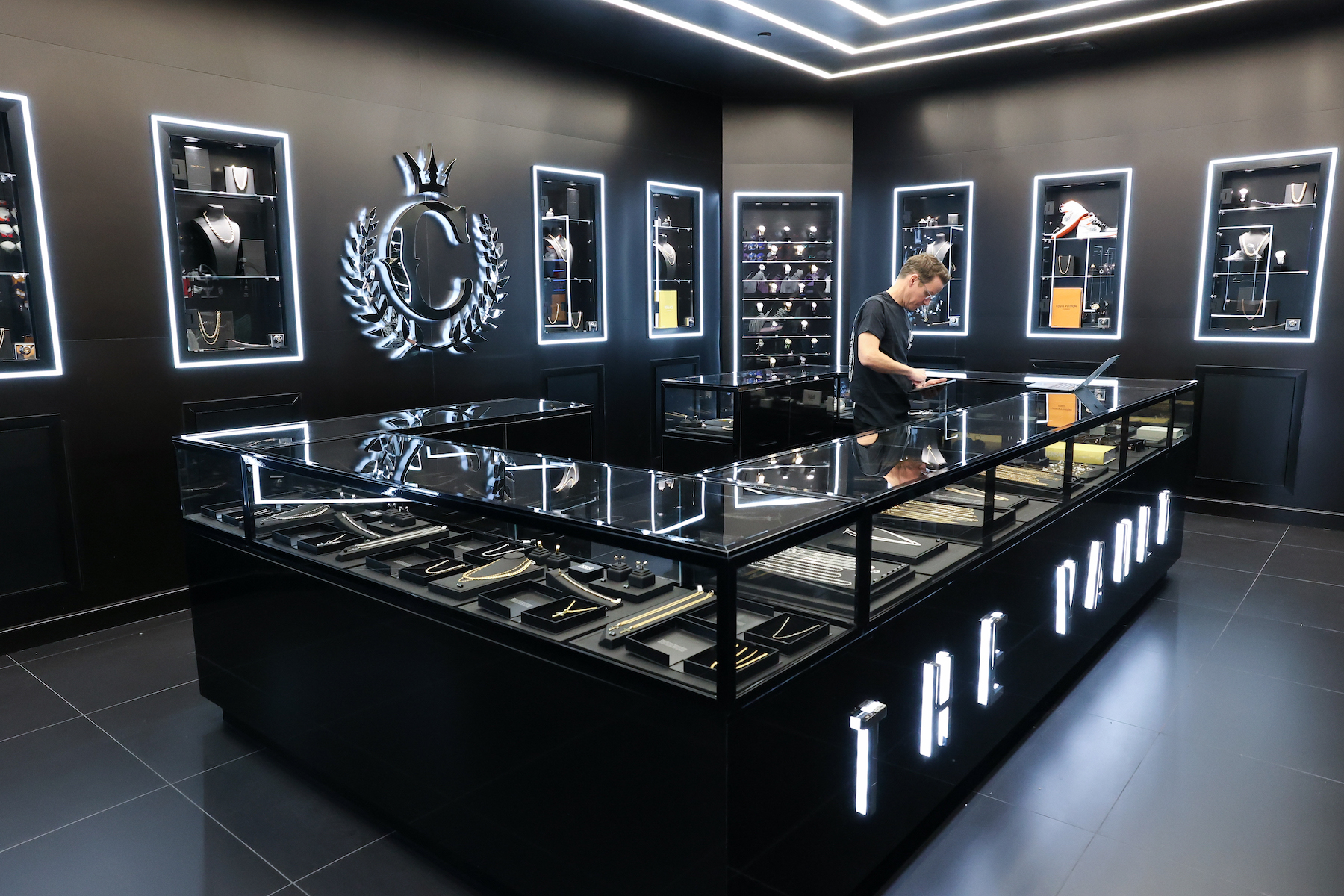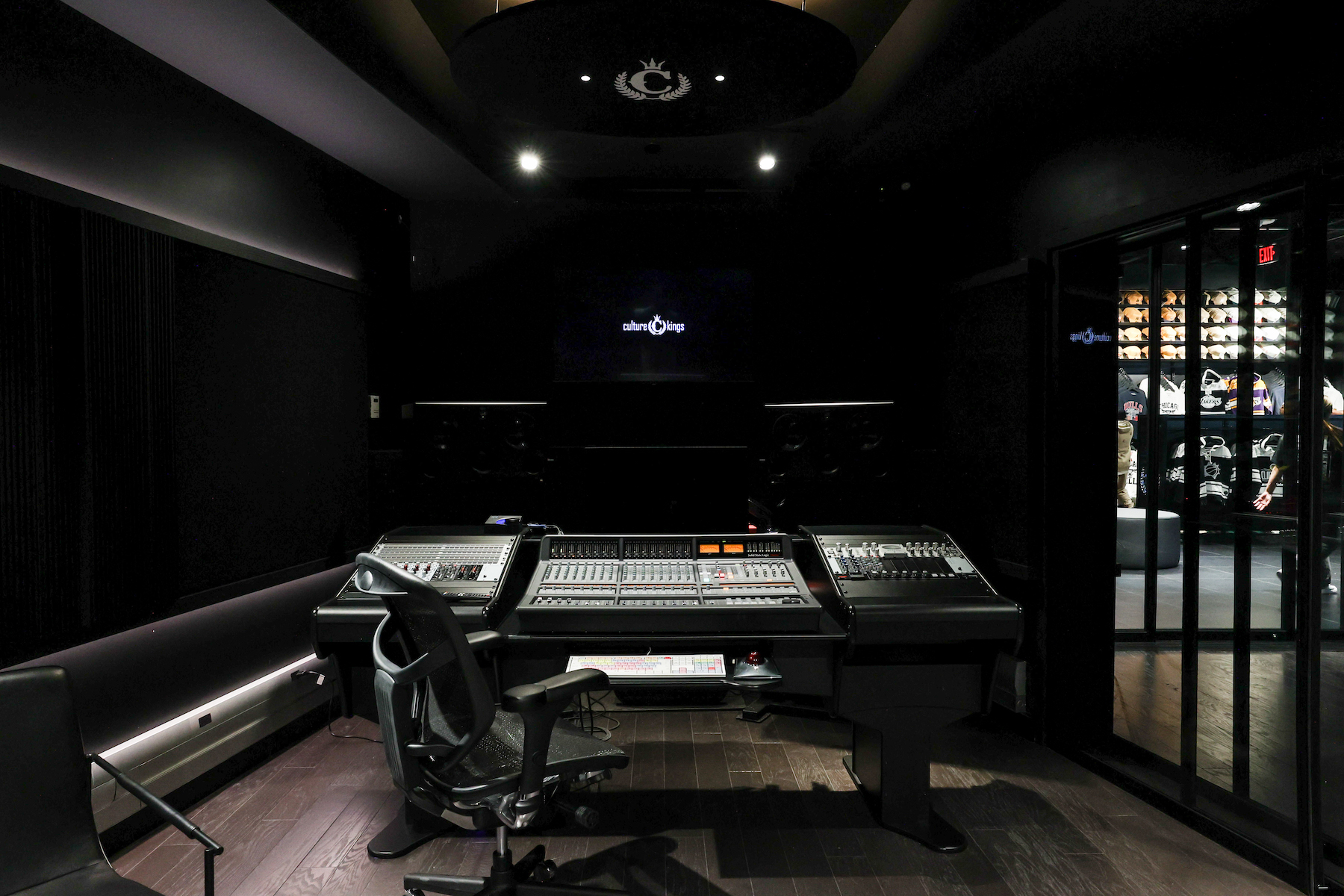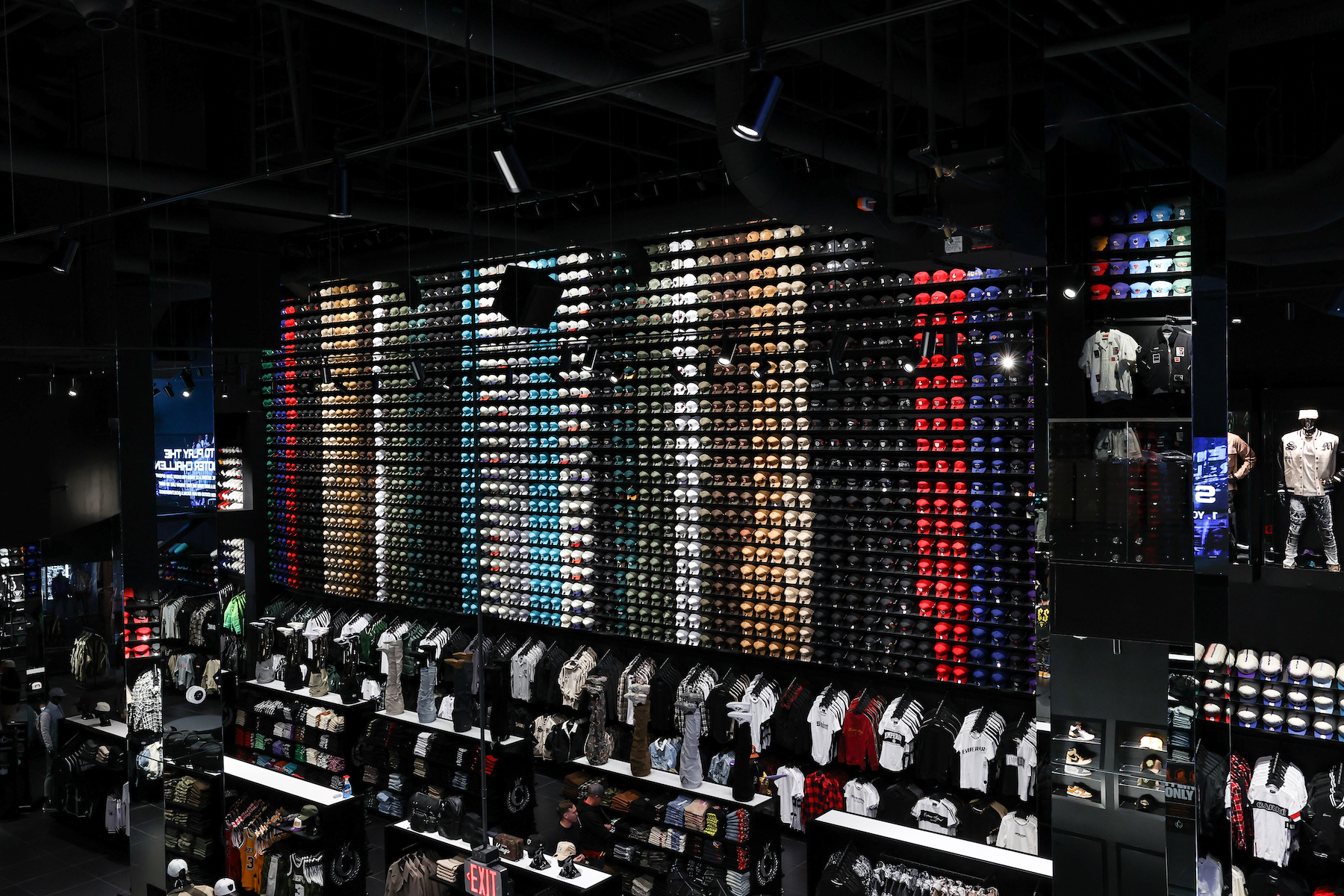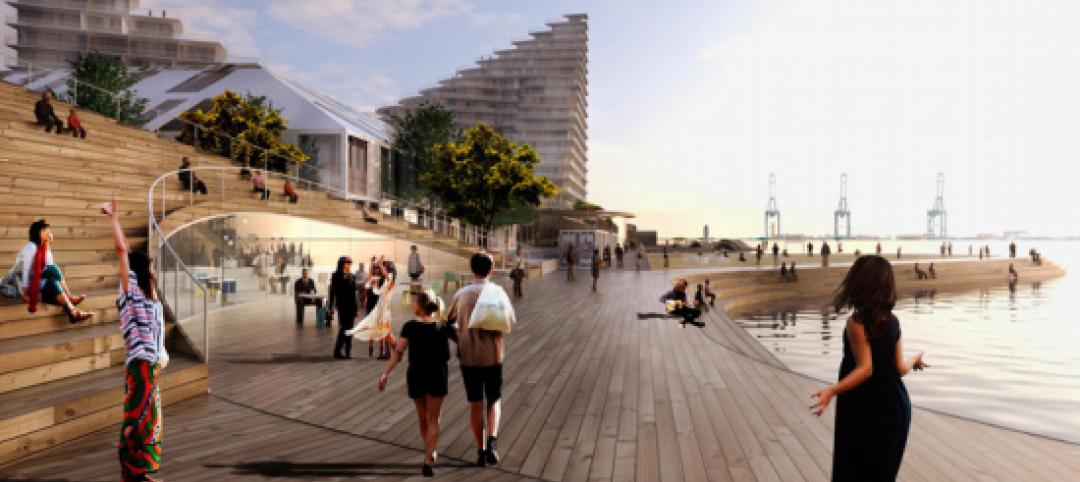Shawmut Design and Construction has been active in the Las Vegas market for nearly 15 years. And it’s safe to say, during that stretch, that Shawmut hadn’t built a retail store whose merchandise assortment includes 11,000 hats, and whose amenities include a state-of-the-art recording studio.
Those are two features of Culture Kings, the renowned streetwear brand based in Brisbane, Australia, which in early November opened its U.S. flagship store at The Forum Shops at Caesars in Las Vegas. Shawmut worked with bokor architecture + interiors (the design architect for Culture Kings’ stores in Australia and New Zealand) and Vegas-based Bunnyfish Studios (the AOR on the project) to create the two-story immersive space that had previously been occupied by four tenants, including an art gallery.
Culture Kings’ stores Down Under, as well as its wider online presence, have popularized the brand among celebrities in the sports, fashion, music, and entertainment worlds. DJs perform daily in each of its stores, whose luxury space, known as “The Vault,” displays the latest in men’s and women’s jewelry, watches, and other accessories. The stores offer over 100 leading brands and 2,000-plus styles of apparel and footwear, including 18 proprietary brands.
U.S. store adds some flourishes

The store in Las Vegas, which took eight months to complete, is Culture Kings’ ninth, and, according to Eric Geisler, a Director at Shawmut’s office in Las Vegas, is “very similar” to the stores in Australia and New Zealand. It includes a half basketball court and a 75-ft-tall hat wall. Interactive games allow customers to play to win products. The 25,000-sf store, with 14,000 sf of retail space, is distinguished by a large staircase with LED-clad risers, a mirrored tunnel hallway that leads patrons to a “Secret Room” with exclusive merch (a feature that the chain introduced at its Auckland, New Zealand, store last year), a jumbotron and more than 50 LED screens that livestream the latest work produced by music and video artists.

Geisler tells BD+C that his team traveled to Australia to tour Culture Kings’ stores there and to pick up on the “vibe” they send out to their customers. “The company wants to create an atmosphere that makes you want to hang out in the stores.”
To that end, the recording studio and bar are unique to the Vegas store, as is a footwear customization lounge. Throughout the store, black floor tile and metal work put the focus on the products and Culture Kings’ content. Geisler says the biggest challenge during construction was “figuring out where things went.”
A pivotal moment for growth?

Simon Beard, Culture Kings’ cofounder and CEO, who launched the company in 2008, told the Las Vegas Review-Journal that the cost of the Las Vegas store (which he didn’t reveal) was more than the combined total for its stores in Australia.
The Vegas store is nestled in The Forum Shops at Caesars between a Fat Tuesday restaurant and an Urban Necessities retail outlet. Culture Kings—which currently generates most of its revenue online, according to the Review-Journal—hasn’t disclosed if it has expansion plans for North America. But it’s worth noting that the company was acquired last year by a.k.a. Brands Holding Corp., which has a reputation for being a retail accelerator.
“This is a pivotal moment for Culture Kings,” a.k.a. Brands’ CEO Jill Ramsey said in a statement about the Vegas store opening. “Consumers are interacting with brands on a different level, and Culture Kings is transforming traditional retail in an unforgettable, immersive experience that can’t be replicated. I’m excited to watch the brand take off in the U.S. and globally.”
Related Stories
| Oct 27, 2014
Report estimates 1.2 million people experience LEED-certified retail centers daily
The "LEED In Motion: Retail" report includes USGBC’s conceptualization of the future of retail, emphasizing the economic and social benefit of green building for retailers of all sizes and types.
| Oct 16, 2014
Perkins+Will white paper examines alternatives to flame retardant building materials
The white paper includes a list of 193 flame retardants, including 29 discovered in building and household products, 50 found in the indoor environment, and 33 in human blood, milk, and tissues.
| Oct 15, 2014
Harvard launches ‘design-centric’ center for green buildings and cities
The impetus behind Harvard's Center for Green Buildings and Cities is what the design school’s dean, Mohsen Mostafavi, describes as a “rapidly urbanizing global economy,” in which cities are building new structures “on a massive scale.”
| Oct 12, 2014
AIA 2030 commitment: Five years on, are we any closer to net-zero?
This year marks the fifth anniversary of the American Institute of Architects’ effort to have architecture firms voluntarily pledge net-zero energy design for all their buildings by 2030.
| Sep 25, 2014
Bjarke Ingels headed home for latest project: Aarhus Island
Aarhus Island will be a waterside development in Denmark's second-largest city. The mixed-use development will implement Ingels' signature angled look in its residential towers.
| Sep 24, 2014
Architecture billings see continued strength, led by institutional sector
On the heels of recording its strongest pace of growth since 2007, there continues to be an increasing level of demand for design services signaled in the latest Architecture Billings Index.
| Sep 22, 2014
4 keys to effective post-occupancy evaluations
Perkins+Will's Janice Barnes covers the four steps that designers should take to create POEs that provide design direction and measure design effectiveness.
| Sep 22, 2014
Sound selections: 12 great choices for ceilings and acoustical walls
From metal mesh panels to concealed-suspension ceilings, here's our roundup of the latest acoustical ceiling and wall products.
| Sep 15, 2014
Ranked: Top international AEC firms [2014 Giants 300 Report]
Parsons Brinckerhoff, Gensler, and Jacobs top BD+C's rankings of U.S.-based design and construction firms with the most revenue from international projects, as reported in the 2014 Giants 300 Report.
| Sep 9, 2014
Using Facebook to transform workplace design
As part of our ongoing studies of how building design influences human behavior in today’s social media-driven world, HOK’s workplace strategists had an idea: Leverage the power of social media to collect data about how people feel about their workplaces and the type of spaces they need to succeed.















